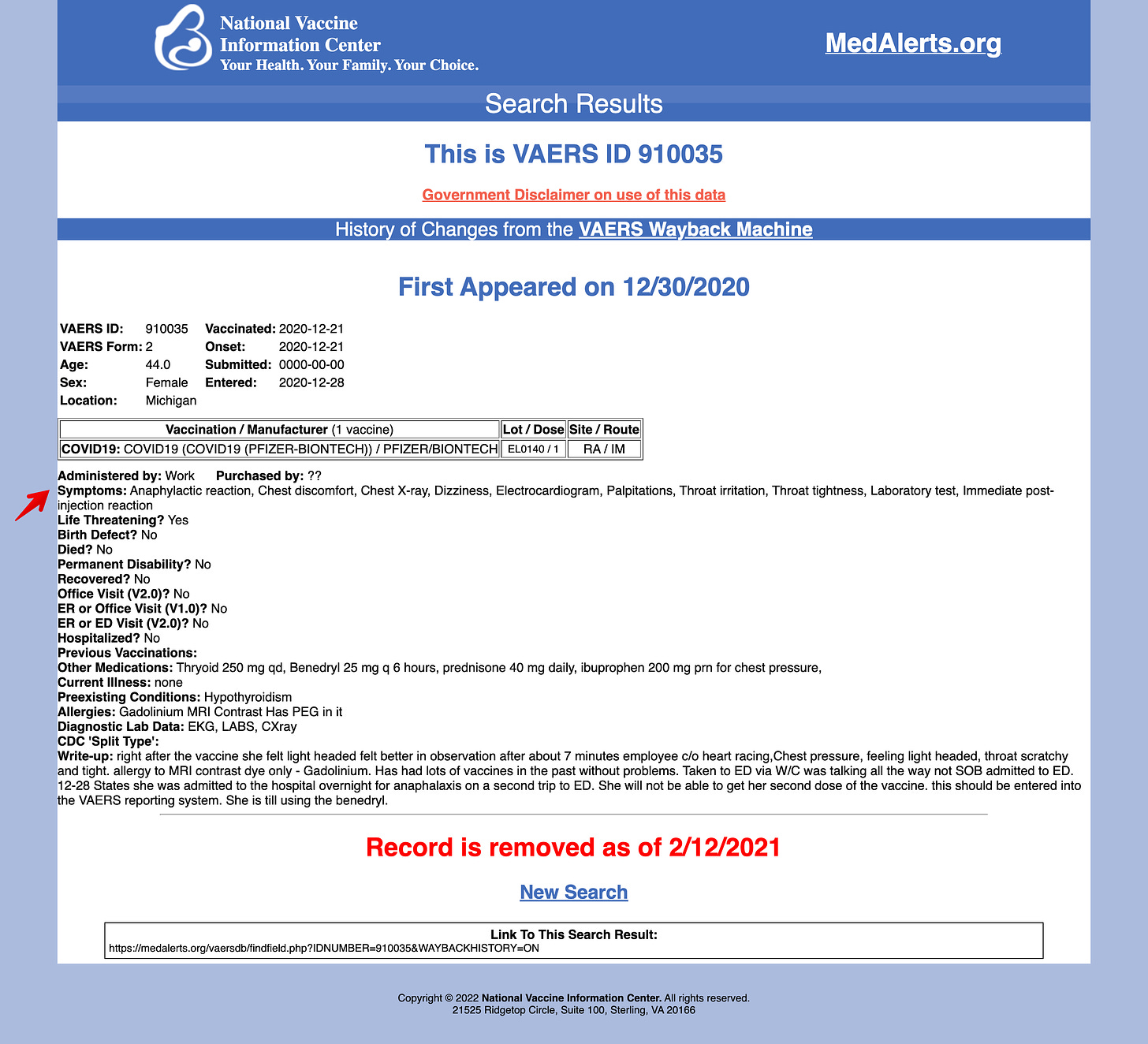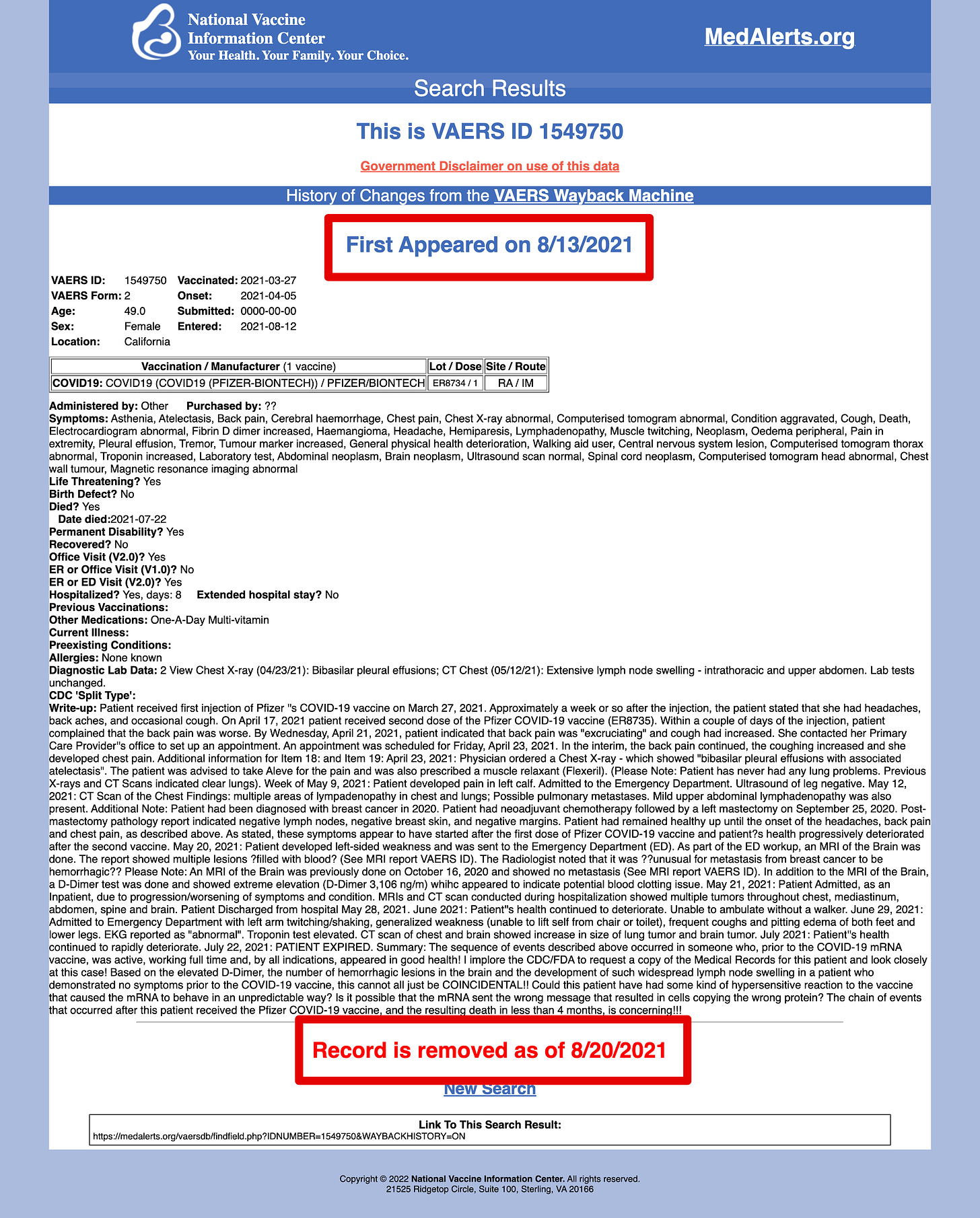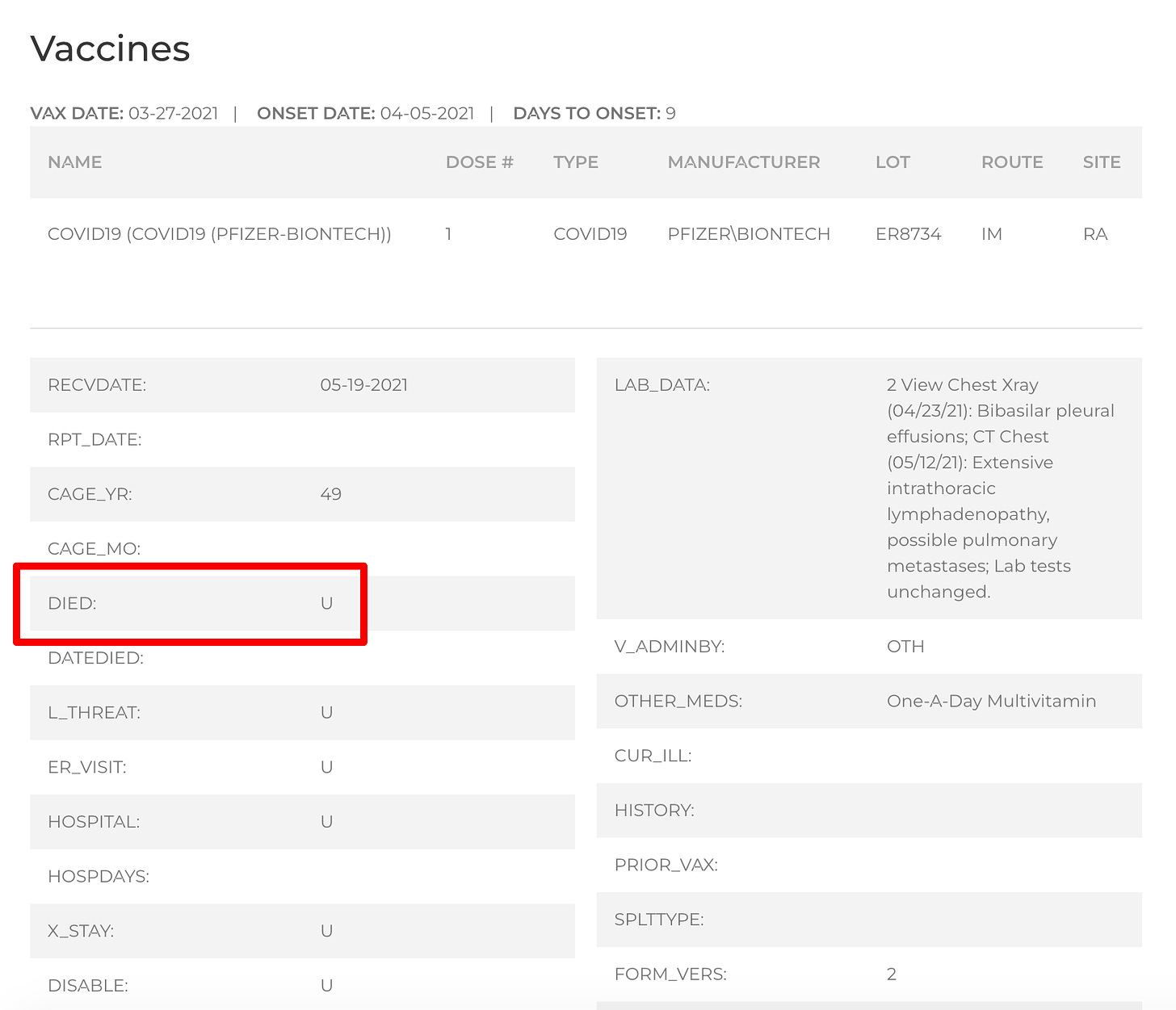10 ways to make the vaccine look safer
When there are duplicate reports in VAERS, there seems to be a strong tendency to retain the report which makes the vaccine look more safe (and delete the one which makes it look more dangerous)
2025 Update: some of the links to the data in this article are now broken because I tried to consolidate the information and also stay within the row limits in my Zoho Analytics account. But I have provided the full CSV file at the very end which you can download and check for yourself. In the previous article, I discussed deleted reports in VAERS. Many of these reports were deleted because they were duplicates.
When you are deleting a report, you have two options:
keep the report which makes the vaccine look more safe
keep the report which makes the vaccine look less safe
(There is also a third option, which involves merging follow up information and creating a new report. I believe that is also being done in some cases)
For this particular article, I am interested in the data which is retained and which is
a) publicly queryable
b) included as part of aggregate statistics
In other words, I am interested in the current state of a given report and refer to it as the “retained” report. It is possible the retained report includes some followup information.
How to identify duplicates
So I start with the dataset from the previous article, and I only include deleted reports where all these fields are non-empty:
calculated age (this is the age of the person on the date of vaccination)
sex
state
vaccination date
From the original report (which had about ~25000 rows), this filter gave me a list of ~15100 reports.
Then I query the three datasets (CSV files) for the years 2020, 2021 and 2022 to get a list of records where these four pieces of information match.
For e.g. here is what the pandas query looks like for the 2020 dataset:
df_2020_vax_date_and_age_match: pd.DataFrame = df_2020.loc[
(df_2020['VAX_DATE'] == vax_date) & (df_2020['CAGE_YR'] == calc_age)
& (df_2020['STATE'] == state) & (df_2020['SEX'] == sex)]Sometimes this provides multiple results.
I then scrape the medalerts page for the Symptom list for the deleted report (to the best of my knowledge, this is the only way to get that list).
Once I have the list of symptoms, I iterate through all the matching records from the previous step and use the one where the maximum number of symptoms match. If this number is zero (that is no symptoms match between the deleted report and the retained report), I exclude it from consideration.
10 Ways to make the vaccine look safer
There are a lot of fields in VAERS reports which indicate the seriousness of the issue.
1 SYMPTOM_TEXT
This is the narrative description of the report. If the deleted report has more information (i.e. a more detailed narrative) than the retained report, I flag this report.
Note: as you can see, this is a pretty crude way to do an analysis. A slightly better way would have been to look at the ENTITY_SCORE of the two reports. However, I am only flagging the information for further investigation, and it is certainly possible that the retained report has more useful information.
As you can see, there are 4655 results.
We started with a list of about 15000 reports, so this is over 30% of all reports where the report with the shorter narrative description was retained.
While this means it is quite common, we cannot simply say this automatically makes the vaccine look safer. Sometimes shorter reports are concise but still accurately report the full picture. I hope to look into this in a future article.
2 DIED
This field records if the patient died.
If the deleted report is marked Yes and the retained report has a different value, I flag this row.
There are 41 such reports.
If anyone can provide a good reason for why this is OK, I would certainly like to know in the comments.
3 L_THREAT
This field records if the report indicates a life threatening issue.
If it is marked as Yes in the deleted report, but has a different value in the retained report, I flag this row.
There are 238 such reports
4 DISABLE
This field records if the patient became disabled.
If it is marked as Yes in the deleted report, but has a different value in the retained report, I flag this row.
There are 358 such reports
5 RECOVD
This field records if the patient recovered.
In this case, if the deleted report marks this value as No, but the retained report has a different value, I flag it.
There are 3311 such reports
6 ER_VISIT
This field records if the patient needed to go to the Emergency Room.
If the deleted report marks this value as No, but the retained report has a different value, I flag it.
There is only 1 such report, so it seems like a fairly rare occurrence.
7 HOSPITAL
This field records if the patient was hospitalized.
If the deleted report marks this value as Yes, but the retained report has a different value, I flag it.
There are 320 such reports
8 HOSPDAYS
This field records how many days the patient was hospitalized. If the deleted report has more days and the retained report has fewer days, I flag the information
There are 589 such reports
9 ONSET_DATE
This field records how many days it took for the symptom onset (from the date of vaccination). If the deleted report has an earlier date than the retained report, I flag the information
There are 1013 such reports
10 X_STAY
This field records if there was an extended hospital stay. If the deleted report says Yes, but the retained report has a different value, I flag the information
There is only one such report.
How to interpret the data
Let us take a look at the reports for the cases where the DIED field was changed from Y to Unknown.
(To be clear, this is not usually changed. Two reports were submitted. One of them has a more serious outcome. The other report leaves the outcome field as blank. The report with the less serious outcome is selected. That is the pattern I am describing here)
I am going to consider the case where DELETED_URL is
https://medalerts.org/vaersdb/findfield.php?IDNUMBER=1549750&WAYBACKHISTORY=ON
and the RETAINED_URL is
https://www.openvaers.com/vaersapp/report.php?vaers_id=1332252
You can read the two reports and see that they are referring to the same person.
In case you are wondering, the reason I use MedAlerts website for the deleted report is because they maintain an archive. The reason I use OpenVAERS for the retained report is because unlike the MedAlerts site, their data is kept up to date on a weekly basis. The result on MedAlerts for a single VAERS report does not seem to get updated frequently.
The report with the death information was removed from VAERS on the same week it entered into the system
The retained report. does not have any information about the eventual outcome.
You can do the same for other DELETED_URL, RETAINED_URL pairs and verify for yourself if the information I have compiled is accurate.
Please do leave a comment if you notice any errors.






Aravind, good work. Have you ever seen by work? https://www.vaersaware.com/deleted-reports-2007-2022